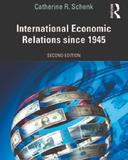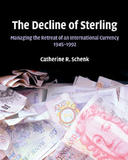Professor Catherine R Schenk
After my undergraduate and Masters degrees at University of Toronto in Economics, International Relations and Chinese Studies, I went to the London School of Economics to complete my PhD in Economic History. Since then I have held academic positions at Victoria University of Wellington, New Zealand, Royal Holloway, University of London and University of Glasgow. I have also been visiting professor at Nankai University, China, and Hong Kong University. Outside academia I have spent time as a visiting researcher at the International Monetary Fund, the Bank for International Settlements, the Bank of England and at the Hong Kong Institute for Monetary Research. I am a Fellow of the Centre for Economic Policy Research and Visiting Academic at the Bank of England.
Research Interests
- International economic relations
- International monetary system
- International banking and finance
My research focuses on the development of the international economy since 1945 with particular emphasis on the evolution of international banking and finance and the international monetary system. My current ERC funded project is GloCoBank, which is charting the development of global correspondent banking from 1870-2000 . My other research focuses on the transitions between international currencies, proposals for reform of the international monetary system in the 1970s and 1980s and the development of international banking and financial regulation. Finally, I have a special interest in the history of China’s international economic relations through Hong Kong.
Featured Publications
The Decline of Sterling; managing the retreat of an international currency 1945-1992, (Cambridge: Cambridge University Press, 2010).
In the Media
Per Jacobsson lecture: Central bank cooperation and US dollar liquidity: what can we learn from the past?
BISness Podcast: Catherine Schenk: Governance at the BIS since 1973
BISness Podcast: why history matters for current economic events and policymaking
Economic History Society Podcast: US-UK Relations: designing the post-1945 World Economy
Current DPhil Students
I currently teach:
Undergraduate papers:
Quantification in History
Graduate papers:
- International Money and Finance after 1945
- Topics in Global Economic History






